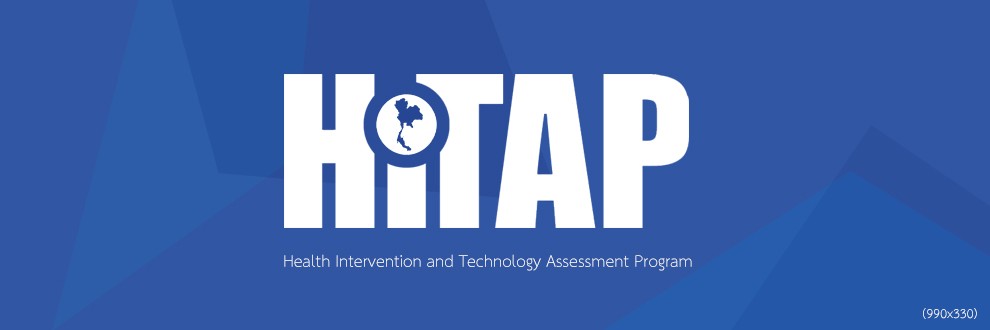This website uses cookies so that we can provide you with the best user experience possible. Cookie information is stored in your browser and performs functions such as recognising you when you return to our website and helping our team to understand which sections of the website you find most interesting and useful.
Economic evaluation of treatment for metastatic clear cell renal cell carcinoma
Project Code
211-366-2555(5)
Research team
Researchers
Co - Researcher
Warinya Deepana
Project Details
Start:
End:
Project Status
Completed - 100%
Viewer: 2522
Publish date20 January 2014 23:59
Project Summary
Introduction: The development of new technology to treat patients with metastatic renal cell carcinoma has resulted in promising outcomes in terms of extending life and improving quality of life. In Thailand, where health resources are limited, an economic evaluation of such technology would provide useful information for pricing and reimbursement decision-making in the benefit packages of Thai public health insurance schemes. Access to these new and expensive drugs would be increased if they were included in the packages.
Objectives: to assess the value for money and budget implication of providing treatment for metastatic clear cell renal cell carcinoma (ccRCC) patients, using both providers’ and societal perspectives.
Methods: This is a cost-utility analysis using a Markov model to simulate the costs and outcomes of treatment for metastatic renal cell carcinoma patients. Choices of treatment for first-line therapy and second-line therapy (after the first-line therapy has failed) are 1) IFN-alpha followed by palliative care, 2) bevacizumab plus IFN-alpha followed by palliative care, 3) sunitinib followed by palliative care, 4) IFN-alpha followed by sorafenib, 5) sunitinib followed by everolimus, and 6) bevacizumab plus IFN-alpha followed by everolimus compared to palliative care. A systematic review and meta-analysis, where available, was used to determine the efficacy of the drugs. The utility of metastatic renal cell carcinoma patients was retrieved from a cross-sectional survey using a structured questionnaire that employed EQ-5D as a measure of health outcomes. The service costs and related household expenses were based on the Thai setting. When the quoted price submitted by pharmaceutical companies to the Subcommittee for Development of the National List of Essential Medicines was not available, the reference price from the database of the Drugs and Medical Supplies Information Center was used. The costs of palliative treatment for renal cell carcinoma patients were obtained from the Central office for Healthcare Information. For the direct non-medical costs, we obtained these from the survey with patients. All costs were adjusted to 2011 values by using the general consumer price index. Lifetime time horizon was applied, with both costs and outcomes discounted at 3%, as recommended by the guidelines of economic evaluation in Thailand. The probabilistic sensitivity analysis was conducted to examine the uncertainty of input parameters used in this model.
Results: The study showed that the lifetime cost of treating ccRCC patients with IFN-alpha as the first-line therapy provided the lowest cost but also the lowest outcome gained. The choice of treatment with sunitinib followed by everolimus yielded the highest quality-adjusted life-year (QALY) gained. However, none of the treatments are cost-effective compared to palliative care when using a ceiling threshold set at 120,000 Thai baht per QALY gained. The budget impact of this technology is relatively low as it is considered to be a rare disease in Thailand. The budget impacts of treatment with IFN-alpha, bevacizumab plus IFN-alpha, and sunitinib were estimated to be 19, 216 and 132 million baht per year, respectively. It was also shown that providing second-line therapy yielded a much higher cost per QALY gained compared with providing only the first-line therapy, with budget impacts of 44 and 30 million baht per year when adding sorafenib and everolimus, repectively. The drug prices need to be reduced by 87-98% in order for this technology to be cost-effective at the current threshold.
Conclusions: Given the current ceiling threshold, providing treatment at the current price for metastatic ccRCC patients is not cost-effective compared to palliative care. Although the choice of treatment with IFN-alpha as the first-line therapy presented the highest value for money, this treatment is not widely used by Thai clinicians because of its adverse effects and its more demanding administration requirements. The threshold analysis on drug prices showed that sunitinib followed by everolimus gave the best value for money when the prices were reduced to 33 baht per capsule and 96 baht per tablet, respectively. With a budget impact of 7 million baht per year, the average number of life years extended was one and a half years. A successful price negotiation with pharmaceutical companies would allow more patients to be able to access these expensive drugs.






